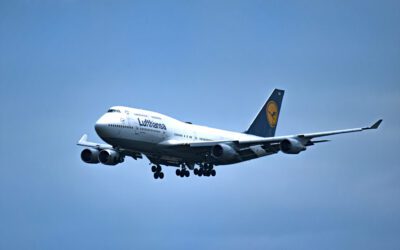Millions of people across the world watched the introduction of the iPhone 7 last week and learned about its upgraded and new features. Immediately after the presentation, travelers began to question whether or not its mixed bag of features made the iPhone 7 a top travel smartphone.
 Let’s take a look and see how the iPhone 7 will work for travelers.
Let’s take a look and see how the iPhone 7 will work for travelers.
The iPhone 7 and 7 Plus have redesigned Retina HD displays which are 25 percent brighter, with wider color gamuts than existing iPhones. They will produce better looking displays of graphics and travelers’ photos. The brighter screen will make it easier to use the phones outside. But, will it be a top travel smartphone?
The iPhone 7 models have a redesigned “home” button which features “Force Touch,” a clear benefit for all users.
The new iPhones have a new 7–megapixel front facing camera with image stabilization for “selfies” and phone calls.
Both new iPhones have an upgraded 12–megapixel rear camera with optical stabilization and a very fast lens for those travelers who prefer to use their phone to make their travel photos and videos. The new cameras have the capability of making excellent images and movies for phone, tablet, and computer display, even in low light conditions. The iPhone 7 Plus has a pair of these cameras for both wide angle and telephoto imaging.
The real top travel smartphone benefits of the iPhone 7, however, are found “under the hood.”
Apple has added water resistance and dust-proofing to the iPhone 7. It meets the IP67 standard, meaning it’s protected against solid objects like dust and sand and will stand up to 30 minutes under water up to a depth of 1 meter. For travelers like me who have traveled through many of the deserts of the world and been caught in unexpected downpours in cities and towns, this is very welcome news. It may make the difference between suffering device failure or allowing its continued operation while on the go.
The new phones have improved LTE data performance, allowing them to handle data at 450 Mbps.
A very welcome new feature is substantially improved battery life. For a top travel smartphone for travelers in transit, this can be very important, as it’s often hard to recharge between destinations.
A significant improvement in the iPhone 7 is its new quad-core A10 Fusion processor. The ability to run travel apps quickly and efficiently is important and the new A10 Fusion processor is a welcome upgrade.
All the above features are welcome and will make the iPhone 7 and 7 Plus a top travel smartphone.
The concern about the iPhone 7 for travelers is Apple’s choice to eliminate the 3.5mm jack for headsets that travelers use daily, especially while flying.
Here’s the problem in a nutshell: While flying, travelers need to use headsets to listen to audio on their smartphones. The preferred headsets for flying are wired because they may be used with smartphones and tablets for the duration of their flight, from gate to gate. Additionally, their quality has been superior to wireless units. On long flights, such as those across the Pacific Ocean to Asia from the U.S., using a smartphone to play music or videos for long stretches of time will deplete the phone’s battery. That will require travelers to charge their phones enroute.
iPhones prior to the iPhone 7 allowed air travelers to listen to audio through their plugged-in headset, while simultaneously charging their phone. With the elimination of the 3.5mm jack, wired headsets must connect to the iPhone 7 through its Lightning connector, apparently, according to many, eliminating travelers’ ability to listen to the iPhone 7’s audio while charging the phone.
Fortunately, it is technologically possible to simultaneously charge the iPhone 7 and connect to its audio through its Lightning connector.
Unfortunately, at the time of the iPhone 7’s official announcement, Apple had no reasonable solution for travelers to use a wired headset and charge the phone simultaneously.
On Friday, Belkin announced they had a solution for the problem — their new “Lightning Audio + Charge RockStar adapter” for iPhone 7 and iPhone 7 Plus. It will be available by October 10.
With the Belkin adapter plugged into the iPhone’s Lightning connector, travelers can simultaneously plug a Lightning cable into the adapter from a charging source and a headset. The Belkin adapter can permit the use of a headset which natively uses a Lightning connector or uses a 3.5mm plug via the new 3.5 mm “Headphone Jack Adapter” from Apple. It’s reasonable to expect a few other companies to offer similar adapters soon.
While this top travel smartphone solution requires travelers purchase and bring an adapter with them, it solves the problem of Apple’s removal of the 3.5mm jack from the iPhone 7.
Personally, I would have preferred Apple produce the iPhone 7 models with a 3.5mm jack instead of adding a second speaker to the phone for stereo audio, as you can’t tell mono from stereo played directly on an iPhone 7. Even considering that, with the Belkin adapter solving the inflight audio problem, the iPhone 7 can be considered a top travel smartphone.
(Image Courtesy of Apple Corporation)
After many years working in corporate America as a chemical engineer, executive and eventually CFO of a multinational manufacturer, Ned founded a tech consulting company and later restarted NSL Photography, his photography business. Before entering the corporate world, Ned worked as a Public Health Engineer for the Philadelphia Department of Public Health. As a well known corporate, travel and wildlife photographer, Ned travels the world writing about travel and photography, as well as running photography workshops, seminars and photowalks. Visit Ned’s Photography Blog and Galleries.



